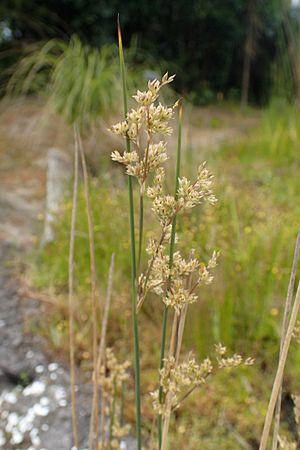Batrachedra tristicta facts for kids
Quick facts for kids Batrachedra tristicta |
|
|---|---|
| Scientific classification | |
| Synonyms | |
|
The Batrachedra tristicta is a tiny moth that belongs to the family Batrachedridae. This moth is special because it is found only in New Zealand. This means it is an endemic species.
Contents
Meet the Batrachedra tristicta
This moth was first discovered and described by a scientist named Edward Meyrick in 1901. He found it in a place called Makatoku, in the Hawkes Bay.
Another scientist, George Hudson, also studied and drew pictures of this moth. He included it in his books about New Zealand's butterflies and moths. The very first example of this moth, called the lectotype, is kept safe at the Natural History Museum, London.
What Does It Look Like?
The Batrachedra tristicta moth is quite small. It measures about 10 to 11 millimeters across when its wings are spread. That's roughly the length of a fingernail!
Its head, antennae, body, and legs are a mix of brown and whitish colors. The wings are mostly whitish with tiny brown specks. It has two small, black, oval-shaped spots on its forewings. There's also a round black dot near the tip of each forewing.
Where Does It Live?
This moth is found only in New Zealand. Besides the Hawkes Bay area where it was first found, it has also been seen in Fiordland. This shows it lives in different parts of the country.
Life and Habits
Adult Batrachedra tristicta moths are usually seen flying around in March. This is when they are active.
What Do They Eat?
The young moths, called larvae, have a special diet. They like to eat the flowers and seeds of certain types of rushes. These include a plant called wiwi (Juncus edgariae) and another one known as soft rush (Juncus effusus).
Images for kids



